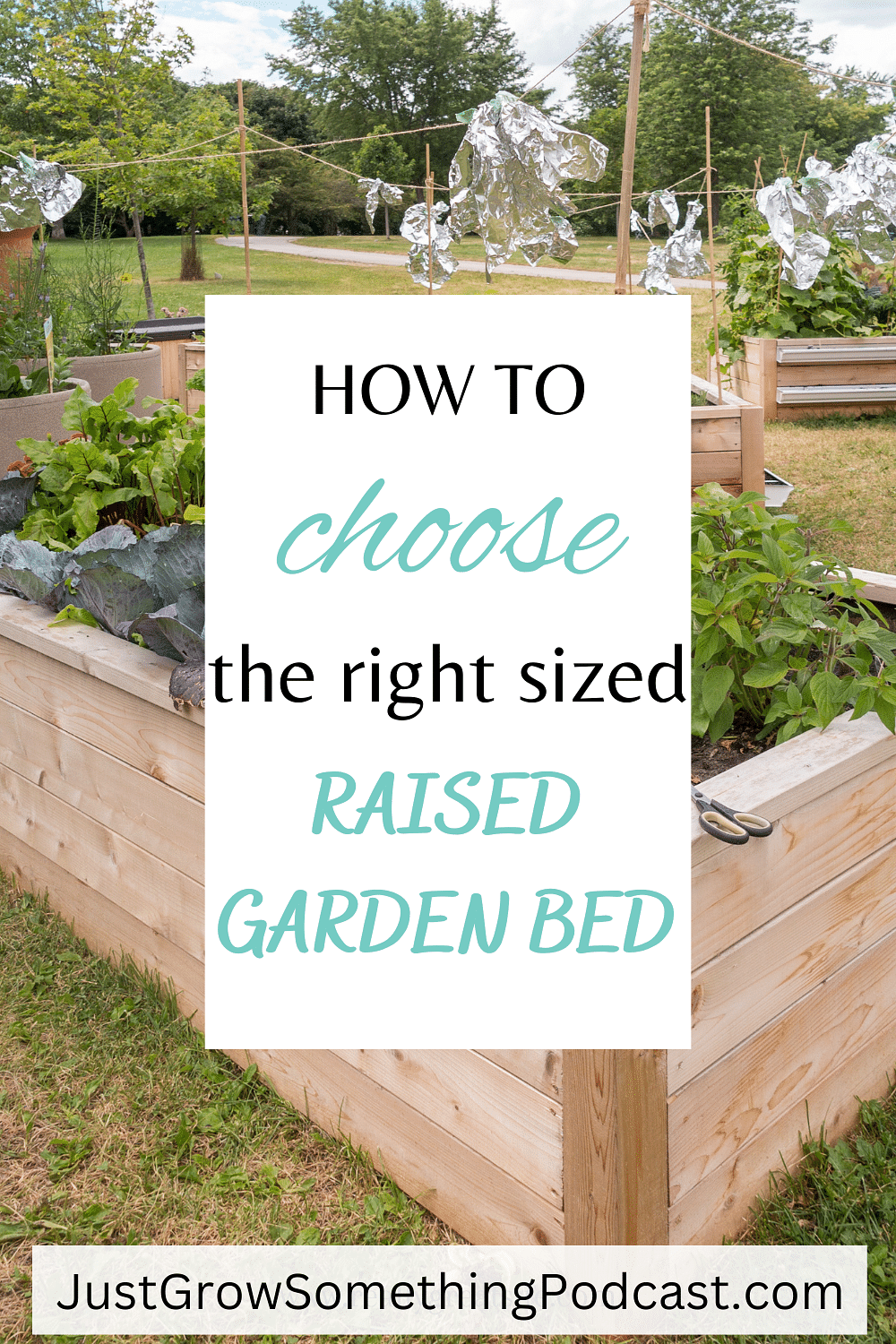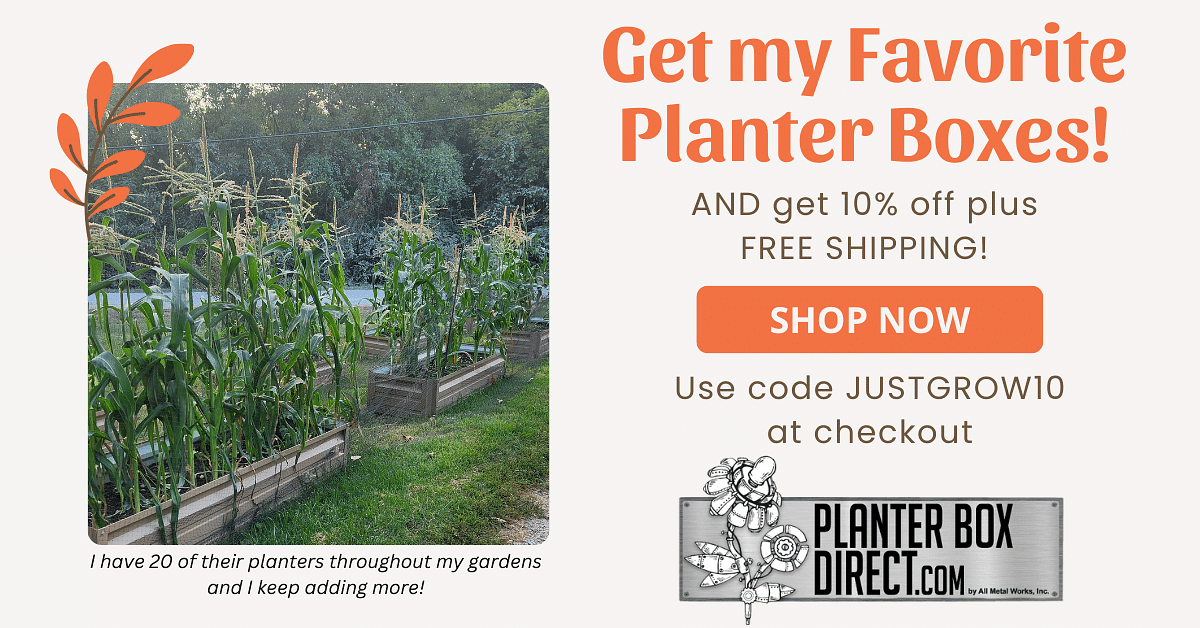
Generally, when we refer to raised beds or raised planters, we’re thinking about boxes we’ve built from wood or other materials or pre-fab planters that we assemble on site from things like composites or metal. This can also be found materials, like tubs and bins we may want to repurpose. So, we’ll use the term raised bed and raised planter interchangeably here.
Many of the considerations we talked about with determining the width of our in-ground beds is repeated for our raised planters, too. You always want to consider the overall dimensions of your gardening space, the tools you’ll be using in the beds, the crops you commonly grow or intend to grow and your gardening style. But with raised beds there are a few other things to consider.
 The depth of the bed.
The depth of the bed.
Very shallow beds are fine for things like leafy greens and small roots, like radishes, that don’t go very deep. For everything else you want a minimum of 16” or about 40cm deep. Most plant roots sit around 4 to 8 inches into the soil, and things like carrots or anything with a deep tap root, like many brassicas, will go as deep as 10”, some even deeper.
The goal is to have enough soil volume in the bed to accommodate the roots of the crop you’re growing, hold the plant in place, and have enough soil available to hold enough nutrients and water for all the plants in the bed. A shallow bed is going to dry out much more quickly than a deeper one and may not hold enough nutrients for more demanding crops, resulting in more frequent feeding and additions of compost.
The upside to shallow beds is they are less expensive to fill the first time around and can cost less overall to install. If it suits your specific purpose, like for shallow-rooted leafy greens, then go for it.
Shallow beds are also okay if the soil beneath the bed is accessible to the deeper-rooted plants, so break up the soil for any beds that are shallower than 10” and leave the bottom off the bed. This obviously won’t work if planting in a container with a solid bottom or on top of unsuitable materials, like rocks, solid clay, concrete, etc.
 Very deep beds do exist to make it easier on the back and are good for perennial plants or very deep-rooted crops that need deeper soil. Be aware of the width in addition to the depth, as the height of these beds may make it difficult to reach the center of very wide beds.
Very deep beds do exist to make it easier on the back and are good for perennial plants or very deep-rooted crops that need deeper soil. Be aware of the width in addition to the depth, as the height of these beds may make it difficult to reach the center of very wide beds.
Special considerations for width
In addition to bed depth, width is equally important. If the bed is too wide, it’s not as easy to just “step into” the bed to reach the middle since the beds are more elevated than in-ground beds. It’s also not good for the soil in the bed to be stepped on frequently, which causes compaction. Be sure to choose a width that allows you to reach the center from any side.
Also consider who is using the garden. Raised planters are great for giving people access to gardens who may not be easily able to get into an in-ground gardening area, like those using walkers, canes, or wheelchairs. Consider the width of the beds for these folks by ensuring the beds are narrow enough to easily reach in to the middle while using their assistance apparatus. Also make sure the walkways are wide enough to get their apparatus through easily. And if making considerations for wheelchair access, don’t make the bed too high. For wheelchair access, the recommended raised bed height is 24” (61cm) tall
Are you gardening with children? A narrower bed is easier for little gardeners to get into without climbing into the planter. For small children, you usually want the beds no wider than three feet (90cm).
Standard Raised Bed Widths
Raised planters are available pre-fabricated in a variety of sizes. The standard widths available are: 18”, 24”, 36”, 48”, 60”, and 72”. General recommendations are for 36” (90cm) for children or folks with special considerations and 48” (1.2m) for everyone else. Most pre-fab companies have multiple widths to choose from, so use your best judgement after taking into consideration the details above and the considerations for in-ground beds.
When building your own, your materials may help define how wide your beds are. If you have scrap lumber available to you in set sizes, this may dictate the width or depth of your bed. Make the best of what you have! And just like with in-ground beds, you can have a mix of widths and depths to suit your individual needs in your particular garden space.
Need more info? Consider this podcast episode: Ep. 129 - Determining New Garden Bed Dimensions
Your Friend in the Garden,

